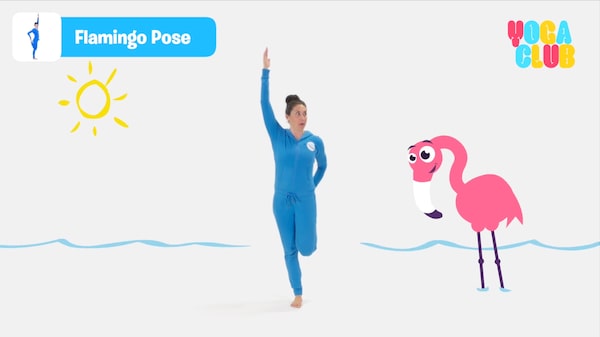
Programs such as Cosmic Kids Yoga on YouTube have proven to be invaluable during the pandemic.YouTube
It’s possible, if you don’t have young kids in the house, that you aren’t familiar with the secret yoga code word “naah-maah-staay.” It’s how Jaime Amor, the onesie-clad host of Cosmic Kids Yoga, begins every YouTube session, and for parents these days it triggers a complex mix of emotions: relief that the kids are up and moving, guilt that they’re not outside playing, and regret that the video won’t last forever.
The recent wave of school lockdowns, coming just as the weather turns harshest, has rekindled parental anxiety about how much exercise kids are getting. Even before the pandemic, this was a problem; only about 40 per cent of children between the ages of 5 and 17 reach the recommended threshold of 60 minutes of moderate-to-vigorous physical activity each day, according to Statistics Canada data. There’s no doubt that online learning, no walk to school, no games of tag at recess and the cancellation of many organized sports has made things worse.
Meanwhile, research keeps on piling up about the beneficial effects of exercise for kids, not just on their bodies, but on their brains and mental well-being that only emphasize how important it is for kids to get up and move.
Online school made our kids addicted to screens. I’m glad it’s almost over
Demand for tutoring soars as parents spend thousands to help kids amid disrupted online learning
For example, researchers at Shandong Normal University in China just published in Frontiers in Physiology the results of a 12-week study in which kindergarteners were given three weekly one-hour phys ed classes. The classes included gymnastic movements to develop balance, co-ordination, flexibility, and other skills – in other words, something that sounds a lot like Cosmic Kids Yoga. Compared with a control group, the kids saw a significant boost in several measures of cognitive performance, as well as an improvement in mental health.
Another recent study, published in AIMS Neuroscience by researchers in Italy, found that girls between the ages of 7 and 10 who participated in gymnastics scored better on tests of working memory than girls who didn’t participate in any sport. And a review that pooled the results of 28 studies with more than 75,000 participants linked physical activity levels to academic performance, thanks to improvements in fitness, brain function, and mood.
While some of these benefits may seem abstract and longer-term, there are also more immediate payoffs. Getting enough physical activity helps kids sleep and makes it easier for them to sit still and stay focused in school. That’s also true – and particularly important – for children with attention deficit hyperactivity disorder: one study found that indoor cycling twice a week, starting with as little as 10 minutes, improved self-regulation and classroom behaviour.

Jaime Amor, the onesie-clad host of Cosmic Kids Yoga on YouTube.YouTube
Knowing all this is great, but in practice, it’s hard not to feel even guiltier about the ways in which I’m failing my own kids while I grapple with the demands of household chores and my own work. But it’s also motivation to look for opportunities, even small ones, to get them moving. Programs such as Cosmic Kids Yoga have proven to be invaluable, especially when I need some uninterrupted time for my own work.
I’ve also tried to keep in mind what Richard Larouche, a University of Lethbridge professor of public health who studies outdoor play, told me when I interviewed him in 2019: kids are more active when they’re outdoors, and when we allow them to play on their own. The promise of independence – being allowed to cross a street, for example – is sometimes enough to get my five- and seven-year-olds out the door.
Still, sometimes they refuse to move unless my wife or I agree to come with them to play tag, toss a ball back and forth, or simply go for a walk. In those cases, even when I have a deadline looming, I try to remember that the best way I can teach my kids is to lead by example, and that all the benefits I’ve listed – brainpower, mood, ability to sit still, and so on – apply just as much to adults as they do to kids.
It’s not easy to tear myself away from my desk, and I’m lucky to be in a position that allows it, but I’m always glad when I do.
Alex Hutchinson is the author of Endure: Mind, Body, and the Curiously Elastic Limits of Human Performance. Follow him on Twitter @sweatscience.
Sign up for the weekly Health & Wellness newsletter for the latest news and advice.